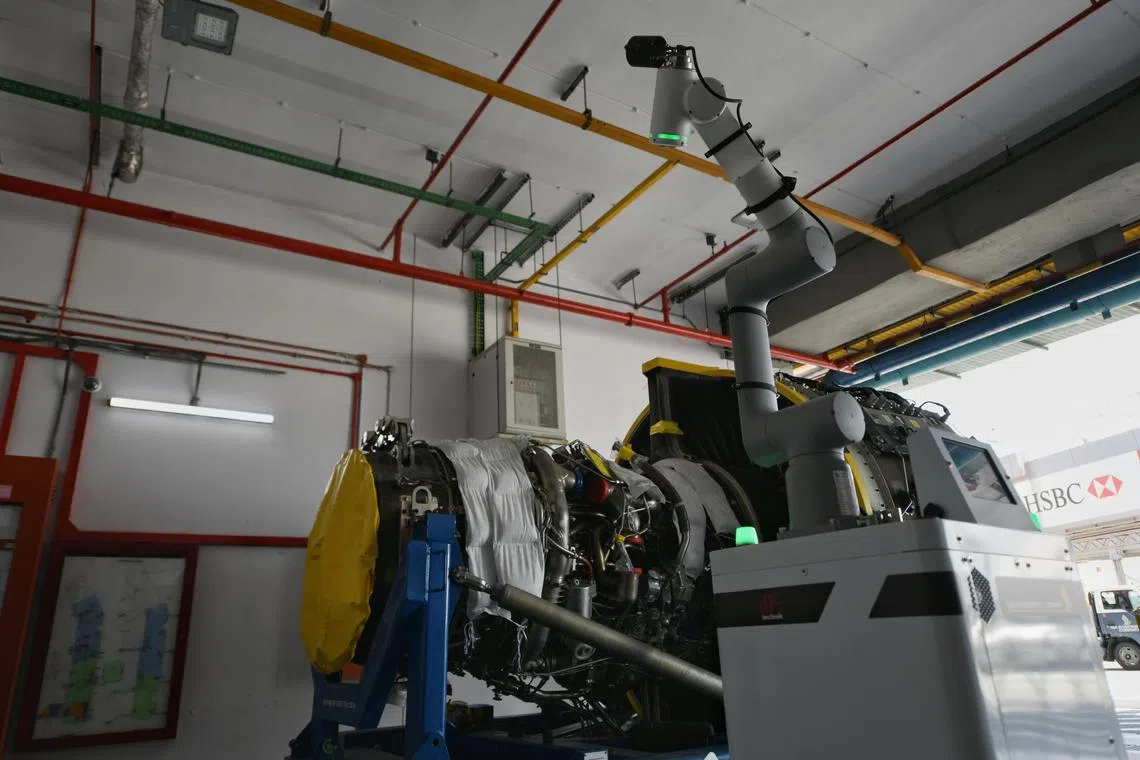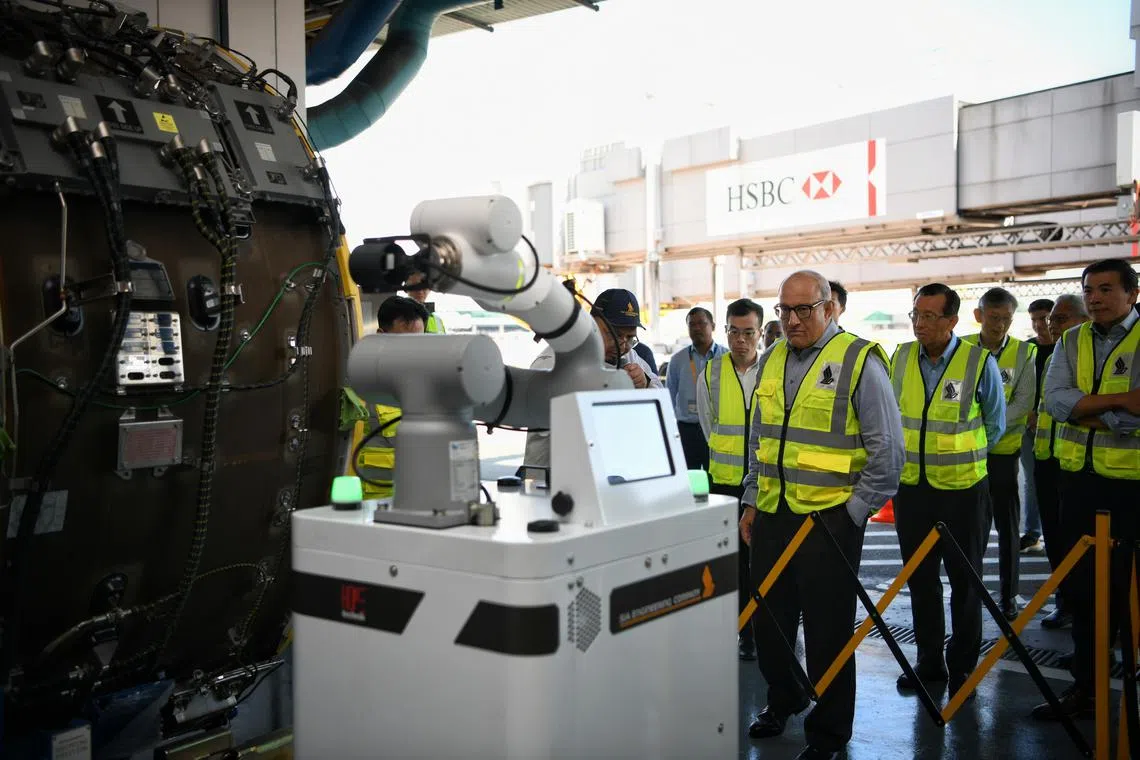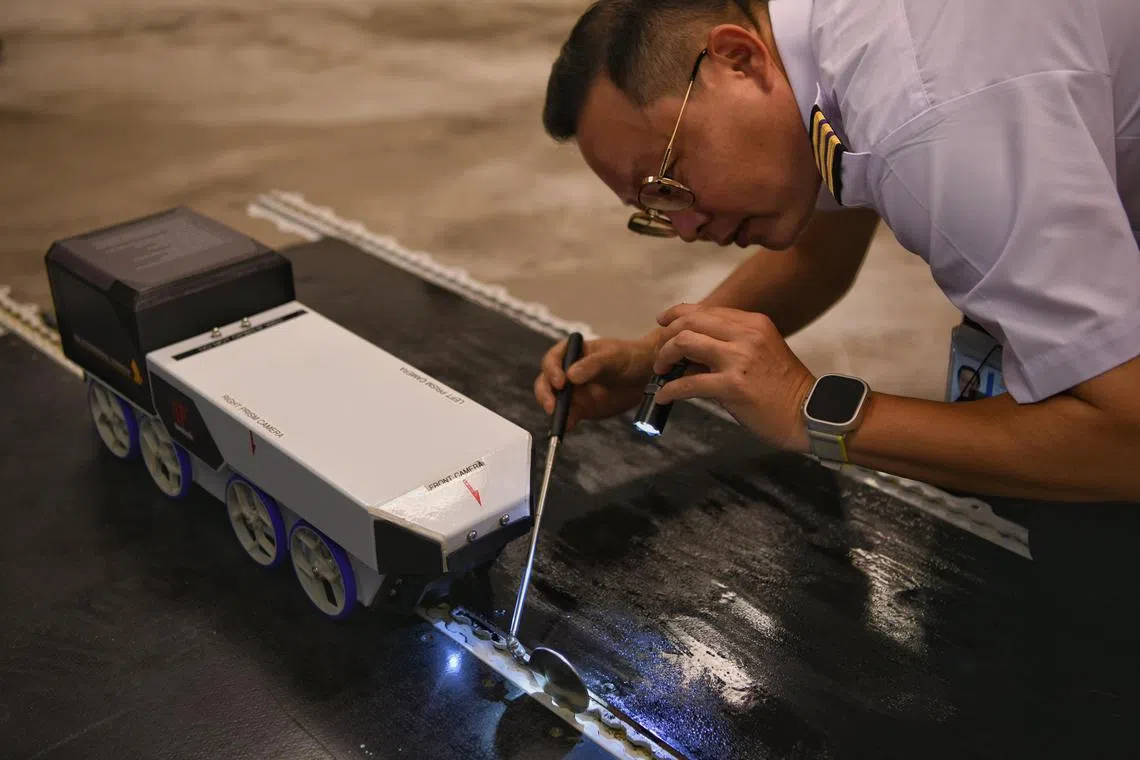SIA Engineering lifts productivity as latest robots help inspect aircraft engines
Sign up now: Get ST's newsletters delivered to your inbox

The engine robotic inspection captures an average of 150 photos, getting shots of engine areas that are usually harder to access.
ST PHOTO: SHINTARO TAY
Follow topic:
SINGAPORE - SIA Engineering’s staff at Changi Airport’s aircraft bays will be relieved of the physical strains involved in manual inspection processes, thanks to its newest robots.
The robots are among several transformation initiatives the company launched on Monday in the latest phase of its journey to boost its competitiveness.
Through the use of a robotic arm, the engine robotic inspection captures an average of 150 photos, quickly getting shots of engine areas that are usually harder for human technicians to access.
The robot’s artificial intelligence (AI) technology also helps engineers to identify discrepancies in installed components by accurately pointing out engine defects.
Similarly, the company has launched another robot to assist engineers with the visual inspection of aircraft seat tracks, which are floor installations that aircraft seats are mounted on.
Equipped with a prism lens that provides easy viewing of the inner and crown sections of the tracks, the robot collects photographic documentation and stores it in its AI system to aid future inspections.
According to SIA Engineering, the engine robotic inspection and seat-track inspection robots will save at least 360 and 422 man-hours every year respectively, on top of significantly reducing staff fatigue.
To improve safety during towing of aircraft, a collision-avoidance system has also been put in place. It uses light distancing and ranging sensors to provide real-time audio and visual warnings to alert drivers to obstructions near an aircraft, saving 2,160 man-hours annually.
Mr Ng Chin Hwee, chief executive of SIA Engineering, said: “By leveraging more advanced technologies and through the development of new capabilities, we aim to continuously make improvements in pursuit of operational excellence.”
Additionally, employees will receive training through initiatives like the Dual-trade Technician Conversion Programme that broadens technical skill sets, said the company.
SIA Engineering also said it will be promoting a culture of innovation, where staff idea submissions and ground-up initiatives to improve operations are encouraged.
“Our workforce is the core of our organisation... We will also empower our staff to take initiative and find effective solutions in their daily work,” Mr Ng said.

Minister for Transport S. Iswaran observing the engine robotic inspection system at Changi Airport on May 29, 2023.
ST PHOTO: SHINTARO TAY
Minister for Transport S. Iswaran, who was at the launch event on Monday, said SIA Engineering’s latest phase of transformation is timely, as many regional countries invest significantly in the aviation sector and as Singapore faces more land and manpower constraints over time.
“I am encouraged that SIA Engineering Company is actively harnessing technology and digitalisation, which are key to overcoming our constraints, improving productivity, and enhancing our competitiveness,“ he said.
“To effectively use such technology, we must have the right talent,” added Mr Iswaran, noting that SIA Engineering has partnered various organisations on initiatives to help its workers upskill.

The company has launched another robot to assist engineers with the visual inspection of aircraft seat tracks,
ST PHOTO: SHINTARO TAY

